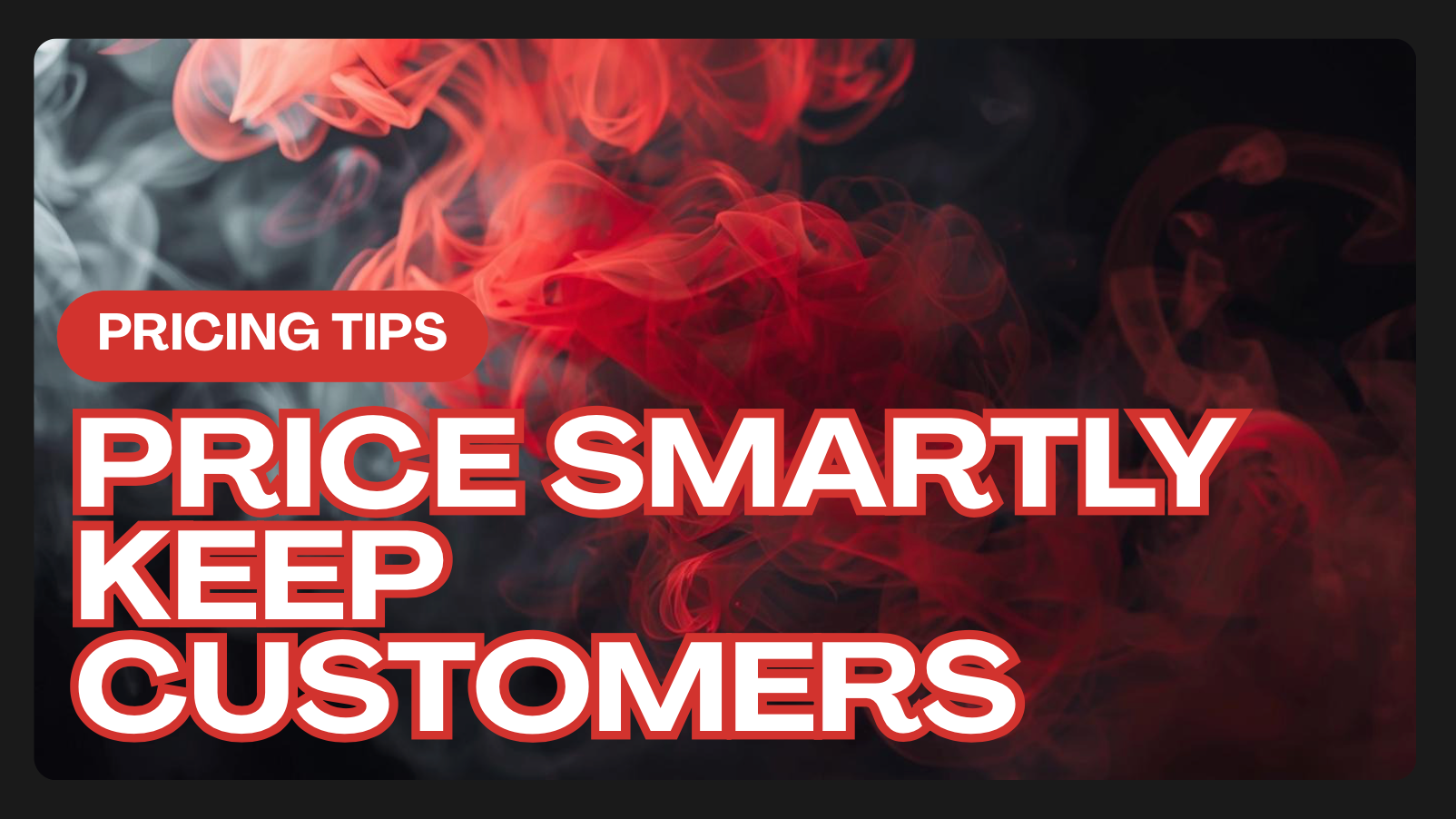Pricing is one of the biggest blind spots for smoke shop owners. Some price everything cheap to “beat the competition” and end up broke. Others slap on fat margins everywhere and wonder why customers only come once. Both are wrong.
The truth? Pricing is a strategy. It’s about balance—protecting your profit while keeping customers happy and loyal. If you don’t take control of it, your shop will either bleed cash or drive people straight into the arms of your competitors.
Here’s the no‑BS breakdown of how to set prices that actually work.
Step 1: Understand What Pricing Really Means
Pricing isn’t just about covering costs. It’s about positioning your shop.
-
Too low = cheap brand. Customers may think your products are knock‑offs or low quality.
-
Too high = out of touch. They’ll test you once, then head to the shop down the street.
-
Just right = trust. Customers feel they’re getting fair value, and they’ll keep coming back.
The goal is to be profitable and competitive—not to race to the bottom or price yourself out of the market.
Step 2: Know Your True Costs
Most owners think cost = invoice price. Wrong.
Your true cost includes:
-
Wholesale price
-
Shipping fees
-
Taxes and duties (if any)
-
Credit card processing fees
-
Labor to receive and stock the product
If you don’t calculate the real cost, your margins are fake.
Step 3: Set Target Margins by Category
Not every product should carry the same margin. Different categories have different expectations.
-
High‑volume basics (wraps, papers): Lower margin, higher turnover.
-
Mid‑tier staples (disposables, juices): Moderate margin, reliable sales.
-
Premium products (glass, rigs, high‑end accessories): Higher margin, slower turnover.
The mix matters. A $0.99 wrap might only bring $0.30 profit—but that wrap pulls the customer into your store, where they also grab a $40 disposable.
Step 4: Don’t Copy Your Competitors Blindly
Checking competitor prices is smart, but copying them is dumb.
-
They might be desperate and underpricing.
-
They might be inflating margins and losing customers.
-
They might not know their costs any better than you.
Use competitor prices as a reference point, not a rulebook.
Step 5: Use Keystone Pricing as a Baseline
A simple starting rule is keystone pricing: double your cost.
-
Wholesale: $5
-
Retail: $10
This won’t work for every product, but it’s a safe benchmark. From there, adjust up or down based on the category, competition, and customer demand.
Step 6: Use Psychological Pricing
People don’t shop with calculators—they shop with emotions.
-
$9.99 feels cheaper than $10.
-
$19.95 feels more approachable than $20.
-
Bundles (“2 for $5”) feel like a deal, even if margin is the same.
Small tweaks in pricing psychology can boost sales without hurting profits.
Step 7: Know When to Go Premium
Not every item should be a bargain. Some products are meant to scream “quality.”
-
Exclusive glass pieces
-
Limited‑edition disposables
-
High‑end accessories
Customers expect to pay more for premium. If you price these too low, you’ll kill the perception of value.
Step 8: Move Slow Stock with Smart Discounts
Discounts aren’t bad—but sloppy discounts are.
-
Bundle deals: Pair slow movers with best sellers.
-
BOGO (Buy One, Get One): Clears dead stock fast.
-
Timed discounts: End‑of‑season sales or “weekend only” promos.
Never discount just because you’re desperate. Discount with a plan.
Step 9: Protect Your Margins from Hidden Leaks
Even with solid pricing, you can lose money if you’re not paying attention.
Leaks include:
-
Employees giving “hook‑ups” to friends.
-
Over‑discounting just to “be nice.”
-
Freebies that aren’t tracked.
-
Not adjusting prices when supplier costs go up.
Every dollar matters. Plug the leaks, or your pricing strategy won’t save you.
Step 10: Test and Adjust Regularly
Pricing is not “set it and forget it.” Markets shift. Trends change. Competitors move.
-
Review margins monthly.
-
Test new price points on fast movers.
-
Watch customer reactions closely.
-
Track which promos actually bring repeat business.
Your pricing strategy should evolve as your shop grows.
Step 11: Train Staff to Sell Value, Not Price
The best pricing strategy in the world fails if your employees only sell on price.
Train them to:
-
Highlight product benefits.
-
Upsell premium options.
-
Explain why your store is worth the visit (better service, cleaner shop, reliable stock).
When staff sell value, customers stop caring about the extra dollar or two.
Step 12: Balance Profit and Loyalty
Your smoke shop isn’t just about today’s sale—it’s about lifetime value.
Would you rather:
-
Make $10 extra once and lose the customer forever, or
-
Make $3 less today but keep them coming back every week?
Play the long game. Protect margins, yes—but protect loyalty even more.
Final Word
Pricing is where smoke shops win or die. Price too low, and you work hard for scraps. Price too high, and you chase away your base.
The right pricing strategy is disciplined, data‑driven, and customer‑focused. Respect your costs, set clear margins, and adjust as needed.
Because the truth is this: if you don’t control your prices, your prices will control you.

